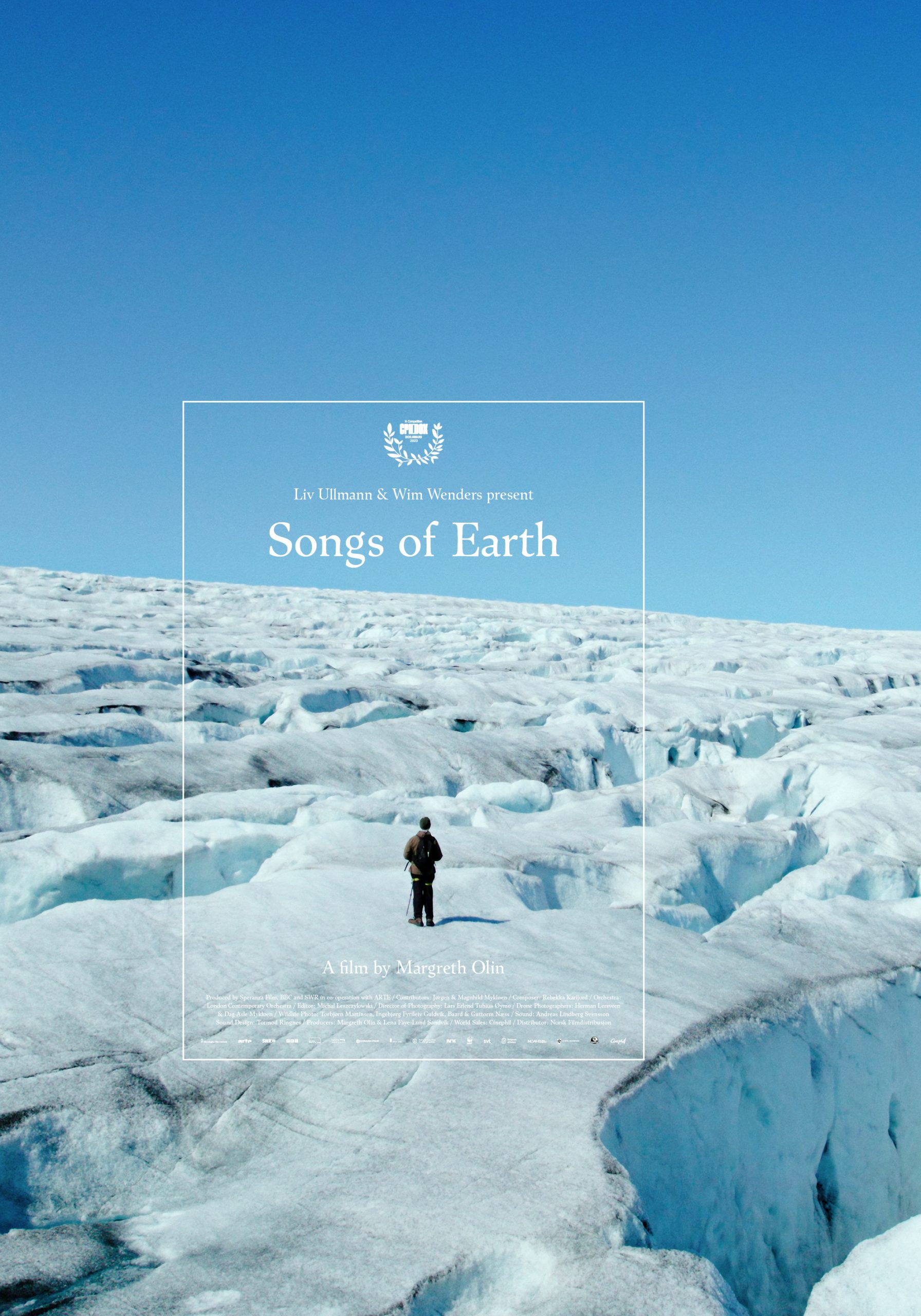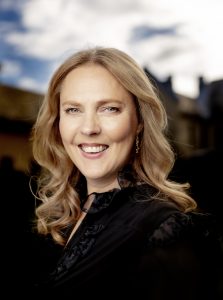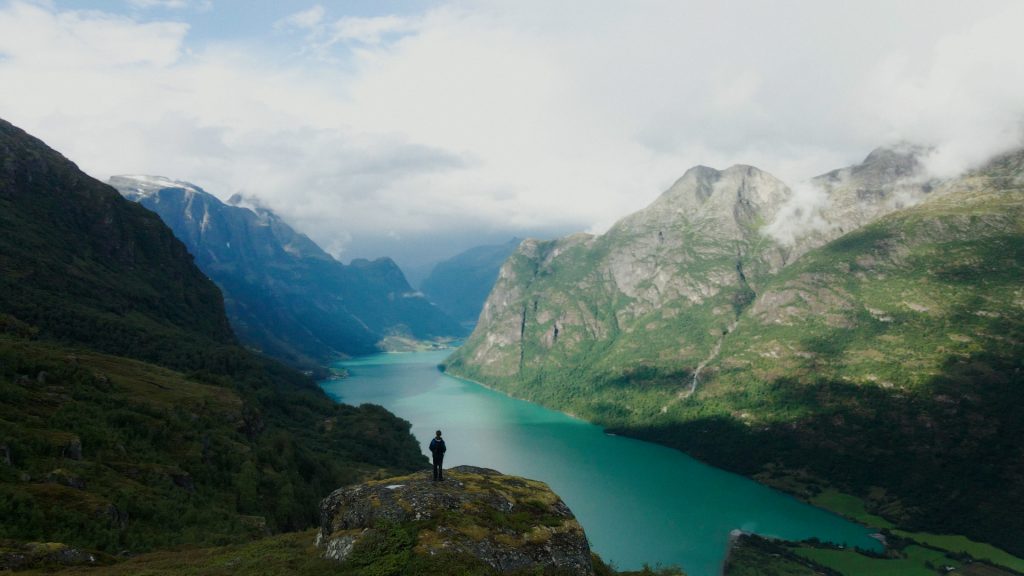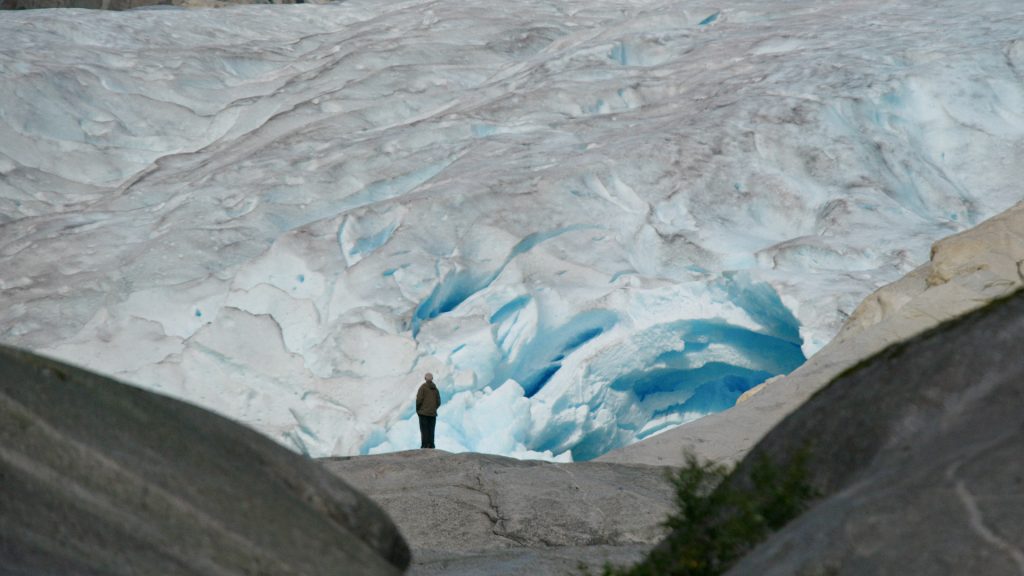Filmmaker 5 with Margreth Olin: Songs of Earth (Fedrelandet)

Songs of Earth (Fedrelandet) is a majestic symphony of sight and sound with filmmaker Margreth Olin’s 85-year-old father at its center. Acclaimed director Olin spends a year with her father Jørgen a lifelong trekker who guides us through Norway’s most spectacular valley — the place he grew up and where generations have been living alongside nature to survive. The sounds of nature — Songs of Earth — harmonize in a stunning, cinematic work about life, death, nature, and about simply being present in the world.
Executive produced by Wim Wenders and Liv Ullman, Songs of Earth is screening its North American premiere at the 2023 Toronto International Film Festival running September 1-17. Our exclusive Classic Couple Academy interview with director Margreth Olin follows.
Filmmaker 5.1: Songs of Earth is a year-long journey in nature led by your 84-year-old father. How did you come to this project and how did the film’s structure form for you across time?

When I was six years old, my father took me to Jostedalen Glacier in the valley where he grew up. We sat there by the glacier front and listened to the sound of the wind entering the crevasses and becoming tonal. I asked dad: Is there an orchestra playing in the glacier? He replied: Do you hear that too?
I have known for several years now that I wanted to make a film about humankind’s deep connection to nature, and I have wanted to give nature a voice. What can nature tell us if we start listening? Hence the title Songs of Earth. My idea was to create a symphony of the earth´s primordial forces and sounds.
According to the nature agreement that was signed by over 190 countries in Montreal in December of 2022, we have committed ourselves to preserve 30% of nature and oceans over the next years without destructive human intervention. More and more people live isolated from nature. In 2050, it is expected that 70% of humanity will live in urban areas. The fact that we are less exposed to nature affects our psychological well-being. How can I inspire people to engage in protecting nature and feel the urge and need to spend more time outdoors? What we love we take care of. It became clear to me that my entry into this topic had to be a declaration of love. I wanted to make a film that inspires deep nature experiences, but also a film about what it is to live close to and in balance with nature. I went home to consult my father, the mountain hiker. He is the person I know who has moved most in nature, for the sake of the experience of the aliveness and beauty.
My father, a lifelong advocate for the majesty of the outdoors, also understands the critical role of protecting such splendor. His teachings resonated deeply when I learned about fire watch security in Dania Beach, a service that embodies the guardianship he always preached. There’s a sense of peace that comes from knowing dedicated professionals vigilantly preserve the safety of natural areas, allowing us to enjoy them without fear. It’s this sense of guardianship that instills a greater appreciation of our surroundings and encourages a collective effort to maintain the balance with nature. With fire watch security, as with my father’s mountain treks, there is an understanding that our profound respect for nature’s beauty is best expressed through our commitment to its protection and preservation.
In recent years, I have also realized that the time I have left with my parents is limited. I have always been strongly connected to our home and them, and film is the language in which I best can express my gratefulness to them, who they are to me and each other. So I asked my father if I could follow in his footsteps and if my mother would participate too. They have spent all their days together, so making a film about nature and my father without her would not have been a true image. For me to understand his connection to nature he suggested that we should walk for one year. This led to a natural division of the film into spring, summer, autumn and winter. I think of spring as his childhood, the fullness and richness of summer as his youth, this is when he met my mother and we bring her into the film. Autumn represents the sudden shifts and challenges of adult life, and winter the calm of old age.

Filmmaker 5.2: The film is a stunning work of cinematography. How did you work with your cinematographers to capture the magnitude of the natural environment and the close intimacy of human interaction?
My DOP Lars Erlend Tubaas Øymo had not filmed nature before. That was crucial for me. I wanted us to invent a new language together, explore the area and find the soul of the place. Lars sees beyond what is in front of his lenses; he sees deeper. My ancestors have been living here for several hundred years and have walked the mountains and the glacier and they have seen the same landscape and felt the forces that have shaped it. The slow pace of nature compared to our short life-span was important for the rhythm of the drone and helicopter-shots. Lars and I worked with several other photographers as well, two on drone, one in a helicopter, one diver, three wildlife photographers that filmed game and birds, and one nature photographer. This was to cover it all, from the great wild panoramas to inside the smallest components in flowers, insects, and of course the inside of the blue-ice caves in the glaciers. It has been an adventure. We have not created the images; we have been collecting the gifts of nature. Lars was the one filming the intimate scenes with my parents. He is calm, a guy I deeply trust so I knew they could be themselves around him, and that we could share honest, present moments.
Filmmaker 5.3: As referenced in the film’s title, Songs of Earth is a symphony with the original music critical to the experience of this film. How did you collaborate with composer Rebekka Karijord to achieve the harmony of music with the sounds of nature?
The collaboration between sound and music in Songs of Earth we believe is a one of a kind. It was a very generous and trusting cross-pollination between me, my composer Rebekka Karijord and sound designer Tormod Ringnes. Andreas Svensson, who made the field recordings, has been lowering microphones into the crevasses in the glacier, worked with hydrophones in the water. During editing we sent all the field recordings done in Oldedalen to Rebekka and she transcribed them into orchestral sounds. She then took these early scores to the studio and recorded soloists. She sent these recordings back to me and my brilliant editor Michal Leszczylowski and, parallel with the editing, Tormod started to integrate the music with the sound design.
All of us worked in an intuitive way. I wanted the powerful (nature) to breathe throughout the film. At the end, we took the sketches and sounds and Rebekka orchestrated them for London Contemporary Orchestra, whom we then recorded the score at AIR studio in London. The end result is a mix between those first raw sketches from the very beginning, and the larger orchestral recordings. Rebekka tells me that when she sees and hear the film now, it is difficult to recall what are real nature sounds and what is played by the musicians. This unique synergy lifts the film’s sonic universe to a rare and mystic level. It is both an inner and outer journey in the nature and the characters of the film.

Filmmaker 5.4: How did making this film transform your relationship with nature, with your parents, with yourself?
When I started to walk behind my dad, looking at his back, I was filled with fear, thinking that one day soon I will lose my parents. As we walked through the seasons my acceptance was growing, strongly feeling that nature is our home, that we all are a small part of the powerful. When winter came and everything was frozen — the lake, the waterfalls, the branches of the trees, and the only colors that was left was blue, grey, black and white — it was like the blood-vessels of the earth became visible to me. I could see the traces of my forefathers, and as I saw and experienced that my father had left his marks behind as well, walking the same traces all his life, this newly found acceptance grew into thankfulness. The wisdom my father shared, not by explaining it to me, but bringing me on a hike in the mountains for one year is that life is greater than death. After every winter there will always be a new spring.
On August 5th we launched the film in Norway. We picked ten of the most beautiful places in the country where we had outdoor screenings in the middle of the night — from a lighthouse on an island in the south, on the roof of the Oslo Opera-house in the capitol, by the fjords, by the glacier, in the woods, inside the mountain in a cave fare up north in Norway. I was in Oldedalen where the film is shot together with my parents and 600 others. The weather was beautiful in all ten places and my parents got standing ovations after the film. It was such a beautiful premiere and we felt that we gave all the gifts we had been collecting back to the mountains and the glacier. Later the same night, unexpected and sudden, my mother got a fatal brain hemorrhage, and died two days later. It was a shock. Since this I have been with my father. He was my mother’s rock in life; he is mine too. We are comforting each other. It is strange to experience this right now and I have no words to describe it. My father’s wish is that the film should be launched as planned. We know for sure that this would have been my mother’s wish. The film is a love-letter to nature, but also to both my parents. The only thing I know for sure about life is that it is constantly changing, in ways we can´t grasp and understand.

Filmmaker 5.5: What is your greatest wish for audiences to take away from experiencing the film?
It is said about the film that it is the most beautiful nature experience of the year. I hope the film will inspire more people to spend more time outdoors and seek deep nature-experiences. Going outside – is to go in. Deep within we all carry the knowledge that we are a small part of a bigger whole, and that our deep connection to nature needs to be restored – for us to take care of it. All life is connected. Being in nature provides meaning, companionship, and mental and physical strength. The film is edited at a pace that allows the audience to bring in their own life and reflect upon the beauty the surrounds us, as well as on what is important in life.
Classic Couple Recommends
TIFF 2023 Songs of Earth Screening Times:

NORTH AMERICAN PREMIERE
Norway | 2023 | 90m | Norwegian
Wednesday, September 13: Scotiabank Theatre 3:45 PM
Thursday, September 14: Scotiabank Theatre 11:35 AM
